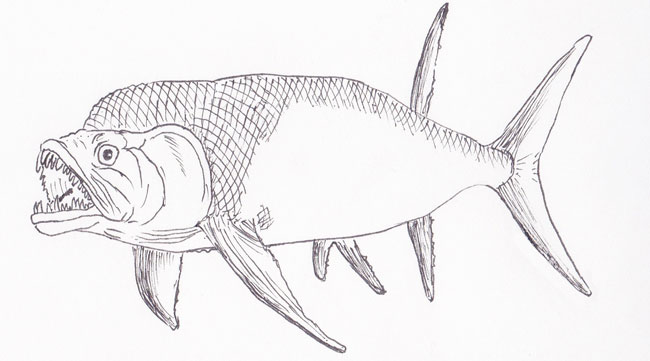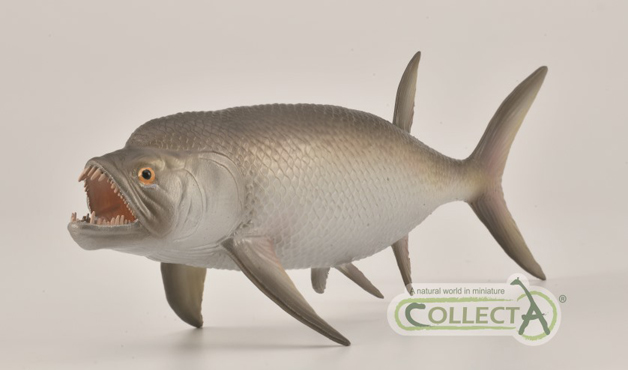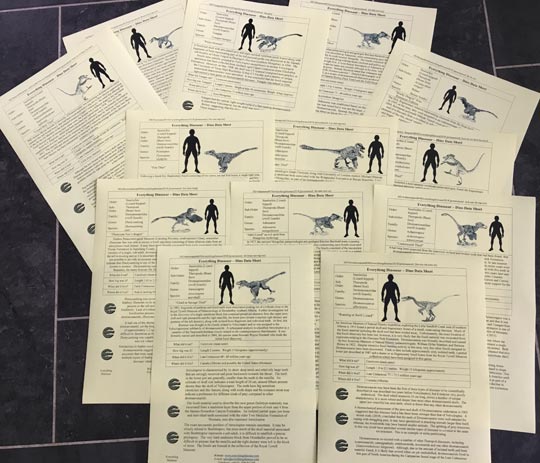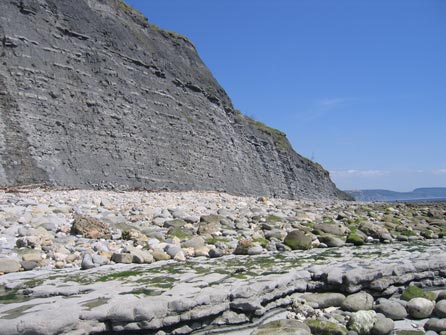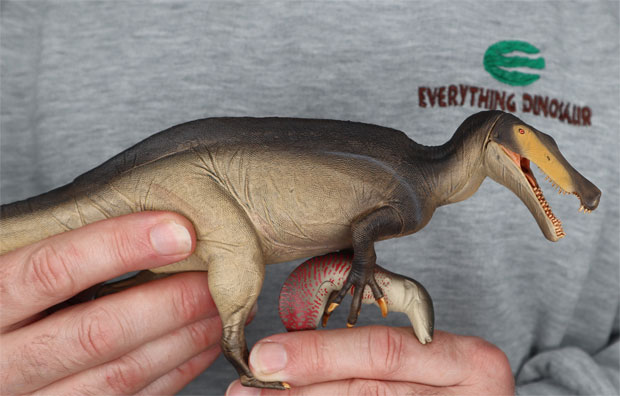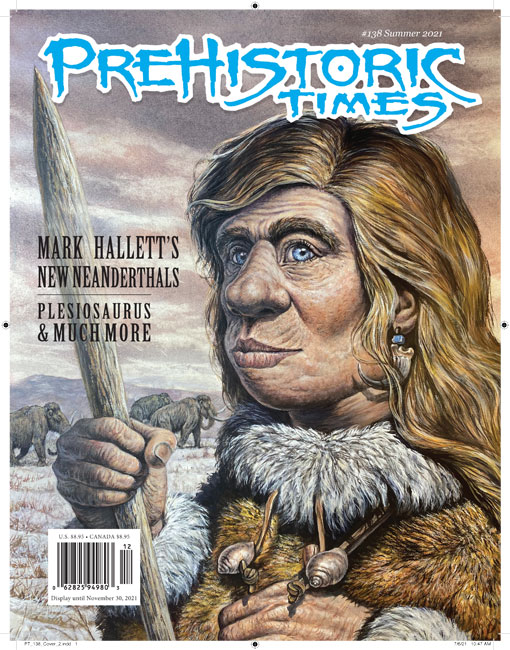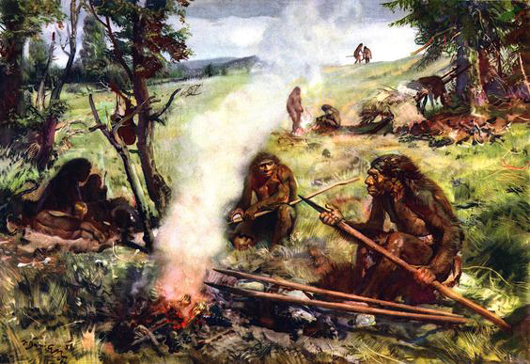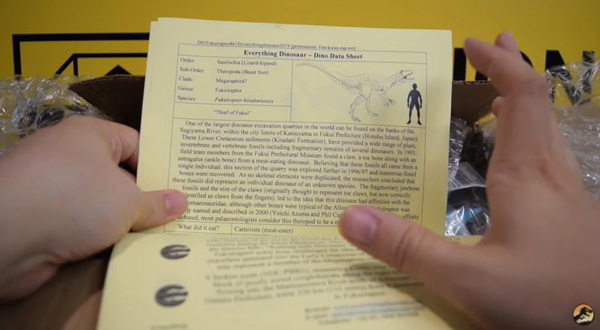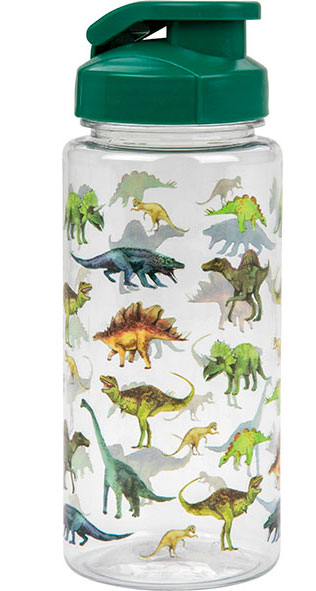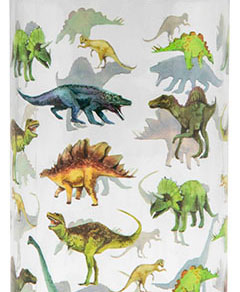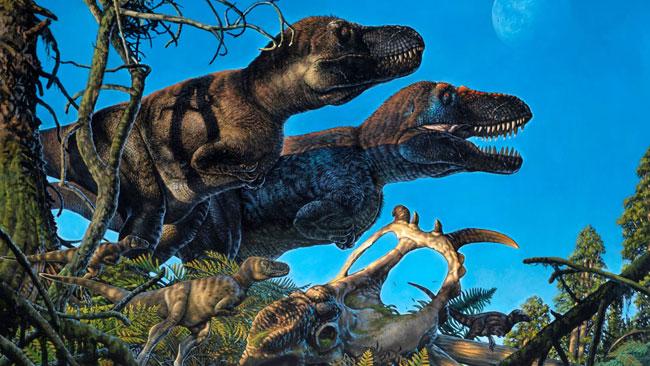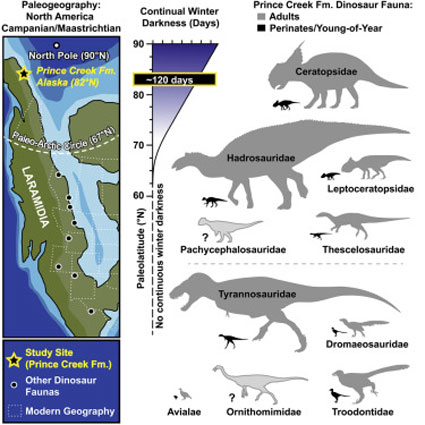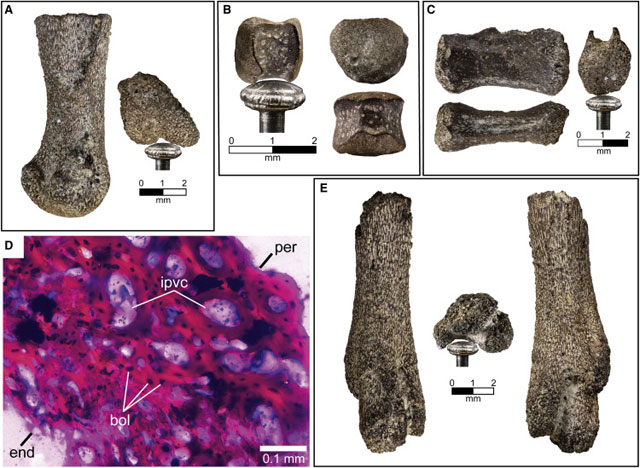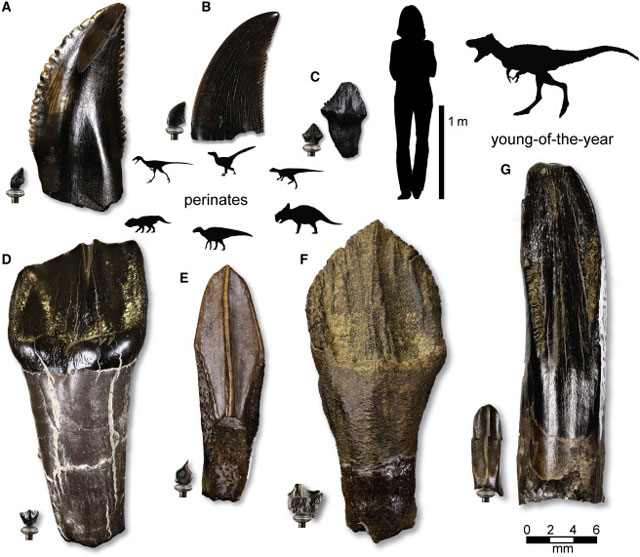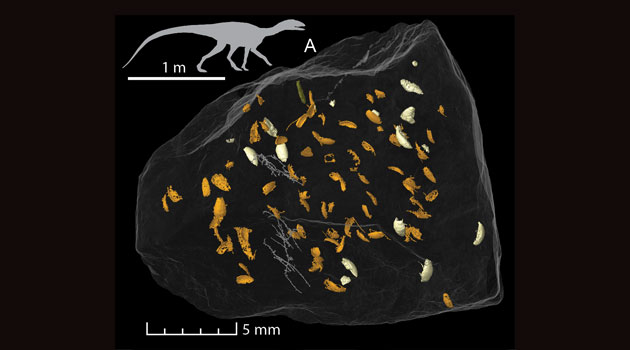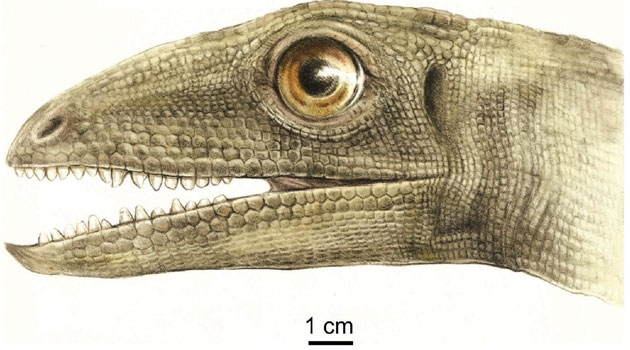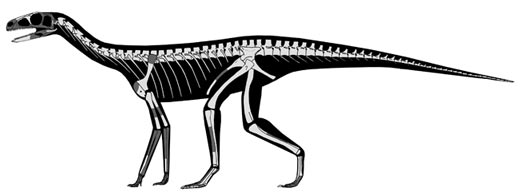Heterodontosaurus Breathes Life into Dinosauria Respiratory Studies
A beautifully preserved and almost complete fossil specimen of the early ornithischian Heterodontosaurus (H. tucki) has provided palaeontologists with a fresh perspective on how bird-hipped dinosaurs breathed.
An international team of scientists including Richard Butler, a professor of palaeobiology at the University of Birmingham, Jonah Choiniere, a professor of comparative palaeobiology at the University of the Witwatersrand, South Africa, Kimberley Chapelle, a postdoctoral fellow at the American Museum of Natural History (New York), subjected the 200-million-year-old fossil to a series of extremely powerful X-rays courtesy of the European Synchrotron Radiation Facility (ESRF) in Grenoble, (France).
The data from these scans permitted the researchers to construct computer models reassembling the skeleton in unprecedented detail and to learn how this dinosaur breathed.
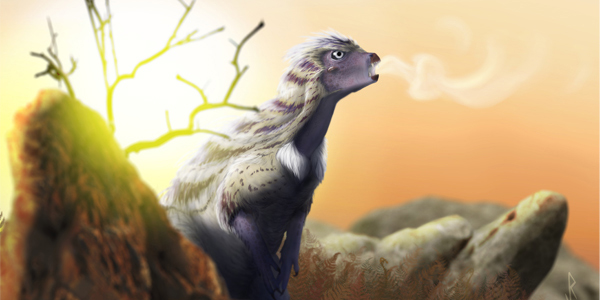
Getting to Understand the Unique Ornithischian Dinosaurs
Vertebrates like reptiles, birds and mammals all move air through their lungs in different ways. Mammals like us have a diaphragm, whilst lizards use rib movements to help them move air through their lungs. Birds have another, very different respiratory system which is more efficient than our own. Birds have thin-walled air sacs connected to their lungs. These air sacs fill a considerable portion of the body cavity. They are not involved directly in gas exchange but function as bellows to direct airflow through the lungs in one direction, from back to front. This increases lung efficiency. To read an article from 2007 that examines how non-avian dinosaurs might have breathed: Dinosaur Breathing Study.
This study showed that Heterodontosaurus was using its oddly shaped ribs connected to its sternum to breathe, but that it also showed the first steps towards a muscle attached to the hips that would inflate the lung – similar to how crocodiles breathe.
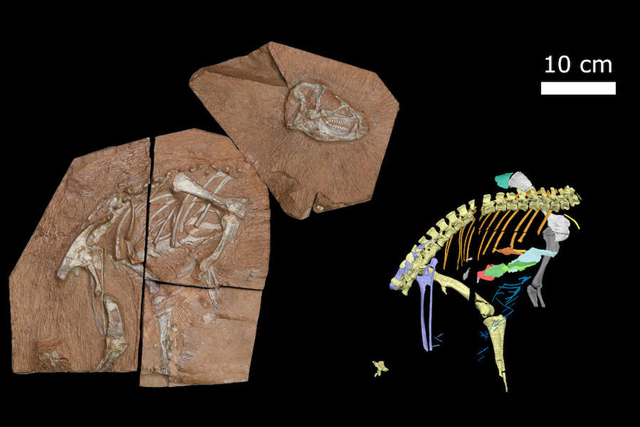
Lead author of the scientific study published in the journal eLife, Viktor Radermacher (PhD student in the University of Minnesota’s Department of Earth and Environmental Sciences), commented:
“This specimen represents a turning point in understanding how dinosaurs evolved”.
Heterodontosaurus Fossil Discovered in 2009
The specimen, representing a sub-adult Heterodontosaurus was discovered in 2009, eroding out of a riverbed. It is the most complete Heterodontosaurus fossil known to science. The surrounding matrix is very hard, so removal of the individual bones was not possible, but employing extremely powerful X-rays allows the scientists to peer inside the matrix and reconstruct the anatomy of this dinosaur.
In 2016, the fossil of the turkey-sized dinosaur was transported to the ESRF for a week-long study. Huge amounts of data on this early member of the Ornithischia were compiled: Heterodontosaurus visits the European Synchrotron.
The Distinctive and Successful Ornithischia
Described in 1962, Heterodontosaurus is thought to one of the most primitive members of the Ornithischia (bird-hipped dinosaurs), although the exact taxonomic placement of the Heterodontosauridae is still debated and their early evolution remains obscure. Ornithischian dinosaurs include the armoured dinosaurs, pachycephalosaurs, ceratopsians and the ornithopods – which encompasses such well-known dinosaurs as Iguanodon and the duck-billed dinosaurs.
Research team member Richard Butler (Birmingham University), explained the importance of this study:
“We’ve long known that the skeletons of ornithischian dinosaurs were radically different from those of other dinosaurs. This amazing new fossil helps us understand why ornithischians were so distinctive and successful”.
Not All Dinosaurs Breathed in the Same Way
The research revealed that Heterodontosaurus possessed numerous gastralia (belly ribs), the first time this anatomical feature has been found in an ornithischian and several other, unique autapomorphies (characteristics), that are unknown in other bird-hipped dinosaurs. For example, it had paddle-shaped sternal ribs and a forward projecting sternum. The team concluded that this suite of anatomical features enabled Heterodontosaurus to breathe in a different way when compared to other members of the Dinosauria. Heterodontosaurus forced air into its lungs by expanding both its belly and chest.
Lead author Viktor Radermacher stated:
“We have actually never known how these ornithischians breathed. The interesting thing is that Heterodontosaurus is the ancestor of this group and it has these [newly discovered] pieces of anatomy, but its descendants don’t. What that means is that Heterodontosaurus is a missing link between the ancestors of dinosaurs and the bigger, charismatic species we know. This gives us a whole bunch of information and fills in some pretty glaring gaps in our knowledge of the biology of these dinosaurs.”
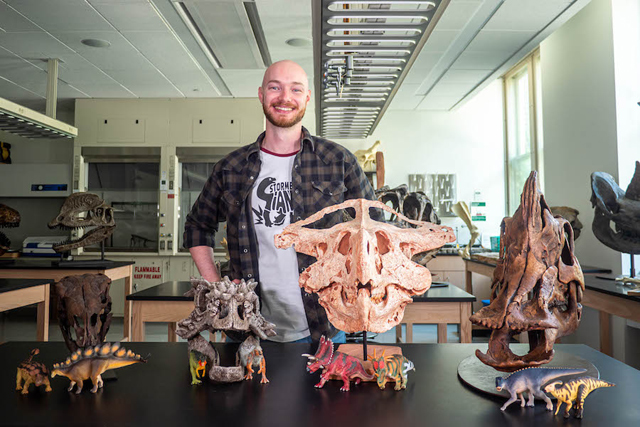
Different Solutions to the Need to Breathe
Viktor Radermacher explained that this research demonstrates that there is still a lot to learn about the Dinosauria and that many different types of tetrapod evolved different solutions when it came to getting oxygen to their muscles.
He added:
“The takeaway message is that there are many ways to breathe. The really interesting thing about life on Earth is that we all have different strategies to do the same thing, and we’ve just identified a new strategy of breathing. This shows that utilising dinosaurs and palaeontology, we can learn more about the diversity of animals on Earth and how they breathe.”
The scientific paper: “A new Heterodontosaurus specimen elucidates the unique ventilatory macroevolution of ornithischian dinosaurs” by Viktor J Radermacher, Vincent Fernandez, Emma R Schachner, Richard J Butler, Emese M Bordy, Michael Naylor Hudgins, William J de Klerk, Kimberley E J Chapelle and Jonah N Choiniere published in eLife.
Visit the Everything Dinosaur website: Visit Everything Dinosaur.


